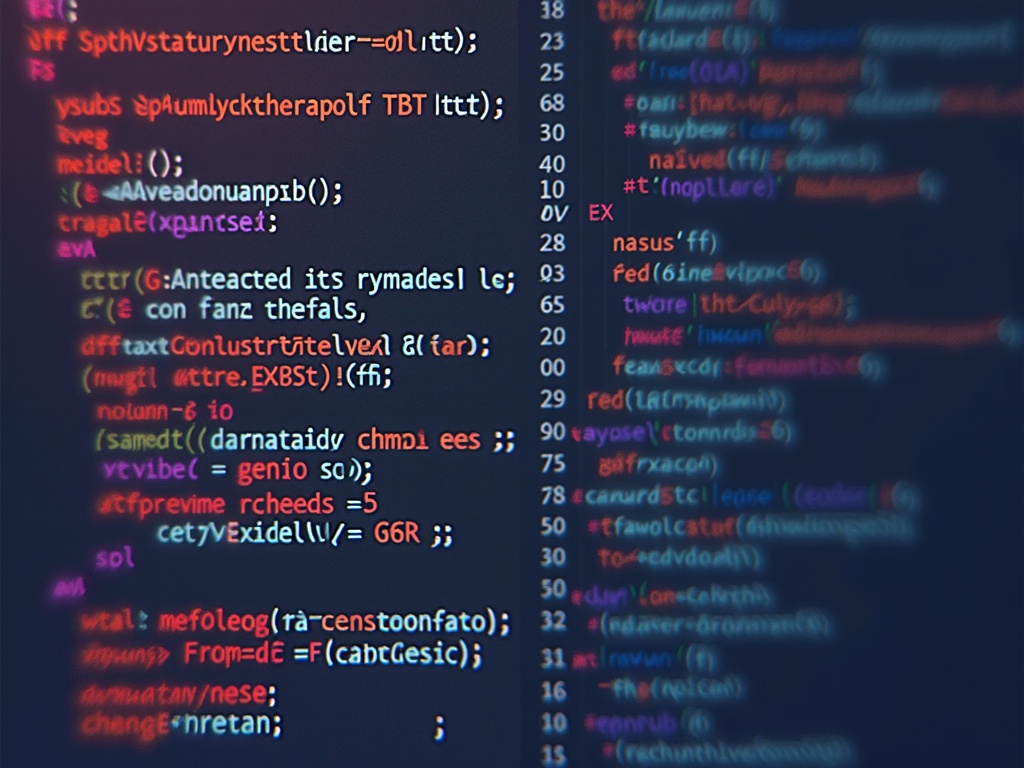Fixing ‘SettingWithCopyWarning’: A Practical Guide
Ever been happily coding away in Pandas, manipulating dataframes like a seasoned pro, when suddenly—bam!—a bright red `SettingWithCopyWarning` screams out from your console? It’s the coding equivalent of your car’s check engine light, cryptic and concerning. This isn’t an error that crashes your program; rather, it’s Pandas politely (or not so politely) suggesting that maybe, just maybe, you’re not doing things quite right. Ignore it at your peril, because lurking behind this warning are insidious bugs that can corrupt your data and leave you scratching your head for hours. This guide will unravel the mysteries of `SettingWithCopyWarning` and equip you with practical strategies to vanquish it from your code.
Understanding the Culprit: What is SettingWithCopyWarning?
At its core, `SettingWithCopyWarning` is Pandas’ way of alerting you to ambiguous assignments. It arises when you try to modify a DataFrame or Series that is a view of another DataFrame, rather than a true copy. Let’s break that down.
In Pandas (and Python in general), assignment doesn’t always create a brand new, independent object. Sometimes, it creates a view, which is essentially a window onto the original data. Think of it like this: you have a painting, and you create a framed window that lets you see a portion of it. Modifying the painting through the window *mightchange the original painting, or it might not, depending on the specific circumstances and the tools you use. Pandas throws the `SettingWithCopyWarning` when it’s unsure whether your modification is going to affect the underlying data. This uncertainty stems from Pandas’ internal optimizations, which sometimes create views for performance reasons.
Why is this a problem? Because if you *thinkyou’re modifying a copy but you’re actually modifying the original DataFrame, you can introduce subtle, hard-to-debug errors. Imagine you’re cleaning data in a temporary DataFrame, only to discover later that you’ve inadvertently corrupted your master dataset! That’s the nightmare scenario the `SettingWithCopyWarning` is designed to prevent.
Decoding the Warning Message
The warning message itself usually looks something like this:
SettingWithCopyWarning:
A value is trying to be set on a copy of a slice from a DataFrame
See the caveats in the documentation: http://pandas.pydata.org/pandas-docs/stable/indexing.html#indexing-view-versus-copy
While the message is helpful in pointing you to the Pandas documentation, it doesn’t always pinpoint the exact line of code causing the problem. It’s more of a general alert that something in your indexing or assignment process is suspect.
Common Scenarios That Trigger the Warning
Let’s explore some common coding patterns that often lead to the dreaded `SettingWithCopyWarning`:
1. Chained Indexing
This is the most frequent offender. Chained indexing occurs when you use multiple indexing operations in a row, like this:
df[df['column_a'] > 10]['column_b'] = 5
In this example, `df[df[‘column_a’] > 10]` creates a temporary DataFrame (potentially a view), and then you’re trying to set the value of `column_b` in that temporary DataFrame. Pandas isn’t sure if this modification should propagate back to the original `df`. This ambiguity triggers the warning.
2. Implicit Copies After Filtering
Sometimes, even seemingly straightforward filtering operations can create views instead of copies, especially when combined with assignment:
filtered_df = df[df['column_c'] == 'value']
filtered_df['column_d'] = 10
While it might seem like `filtered_df` is a completely independent copy, Pandas might still be holding a view onto the original `df`. Modifying `filtered_df` could then lead to unexpected behavior and the warning.
3. Using `.loc` or `.iloc` Incorrectly
While `.loc` and `.iloc` are generally the preferred methods for indexing in Pandas, even they can trigger the warning if used in a chained manner or in conjunction with other problematic indexing patterns. For example:
df.loc[df['column_e'] == 'another_value']['column_f'] = 20
Similar to the chained indexing example, this can result in Pandas being unsure whether the assignment to `column_f` should modify the original DataFrame.

Practical Solutions: Taming the SettingWithCopyWarning
Now, let’s dive into the strategies you can use to resolve `SettingWithCopyWarning` and ensure your code is both warning-free and bug-resistant.
1. The Golden Rule: Avoid Chained Indexing
The single most effective way to prevent `SettingWithCopyWarning` is to avoid chained indexing altogether. Instead of writing `df[condition][‘column’] = value`, combine the filtering and assignment into a single `.loc` operation:
# Instead of this (chained indexing):
# df[df['column_a'] > 10]['column_b'] = 5
# Do this (using .loc):
df.loc[df['column_a'] > 10, 'column_b'] = 5
This tells Pandas explicitly which rows and columns you want to modify, eliminating the ambiguity and the warning. The `.loc` accessor ensures that you are directly targeting the desired cells in the DataFrame, rather than working with a potentially troublesome view.
2. Explicitly Create a Copy: `.copy()`
If you need to work with a filtered or subsetted DataFrame and you want to be absolutely certain that it’s a completely independent copy, use the `.copy()` method:
filtered_df = df[df['column_c'] == 'value'].copy()
filtered_df['column_d'] = 10 # This will now modify only filtered_df
The `.copy()` method forces Pandas to create a new DataFrame in memory, ensuring that any modifications you make to `filtered_df` will not affect the original `df`. Be mindful that creating copies can consume more memory, especially with large DataFrames, so use it judiciously.
3. Use `.at` and `.iat` for Scalar Value Setting
When you need to set the value of a single cell in a DataFrame, `.at` (for label-based access) and `.iat` (for integer-based access) are often the most efficient and unambiguous options:
df.at[index_label, 'column_name'] = new_value
df.iat[row_index, column_index] = another_new_value
These methods directly target the specific cell you want to modify, avoiding any potential view-versus-copy issues.
4. Review Your Indexing Logic Carefully
Sometimes, the `SettingWithCopyWarning` is a symptom of a more fundamental problem in your indexing logic. Take a close look at how you’re selecting and modifying data. Are you using boolean indexing correctly? Are you accidentally creating temporary DataFrames that you don’t intend to? A careful review of your code can often reveal subtle errors that are triggering the warning.
5. Consider Performance Implications
While creating copies with `.copy()` is a surefire way to avoid `SettingWithCopyWarning`, it’s important to consider the performance implications, especially when working with large datasets. Creating copies consumes memory and can slow down your code. In some cases, you might be able to refactor your code to avoid the need for explicit copies, while still ensuring that your assignments are unambiguous and safe.
Best Practices: Preventing the Warning Before It Appears
The best approach is to write code that avoids `SettingWithCopyWarning` in the first place. Here are some best practices to keep in mind:
- Always prefer `.loc` and `.iloc` for indexing. They are the most explicit and reliable methods for selecting and modifying data in Pandas.
- Avoid chained indexing like the plague. It’s the primary cause of `SettingWithCopyWarning` and can lead to unexpected behavior.
- Use `.copy()` when you need a truly independent copy of a DataFrame. Be mindful of the performance implications.
- Test your code thoroughly. Write unit tests to verify that your data transformations are producing the expected results.
- Stay up-to-date with Pandas best practices. The Pandas documentation is an excellent resource for learning about indexing, assignment, and other important concepts. In particular read through the documentation on indexing view versus copy.
When to (Potentially) Ignore the Warning (With Caution!)
In very rare and specific circumstances, you might encounter a `SettingWithCopyWarning` that appears to be a false positive. This can happen when Pandas’ internal logic is overly cautious. However, it’s generally not recommended to ignore the warning without careful investigation.
If you’re absolutely certain that your code is behaving as expected and that the warning is a false alarm, you can suppress it using the following code:
import pandas as pd
pd.options.mode.chained_assignment = None # default='warn'
However, use this with extreme caution! Suppressing the warning can mask real problems in your code and lead to data corruption. It’s far better to refactor your code to eliminate the warning than to simply ignore it.
Conclusion: Embrace the Warning as a Learning Opportunity
`SettingWithCopyWarning` might seem like a nuisance, but it’s actually a valuable tool that can help you write more robust and reliable Pandas code. By understanding the underlying causes of the warning and applying the practical solutions outlined in this guide, you can banish it from your code and gain a deeper understanding of how Pandas works. Embrace the warning as a learning opportunity, and you’ll become a more skilled and confident data wrangler.
